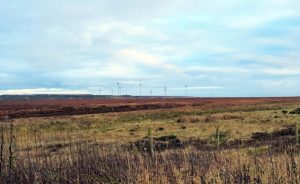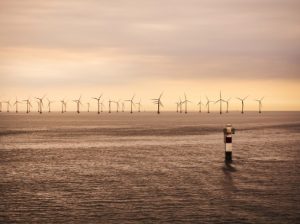High winds causing problems at Bridgewater Place

CONCERNS are being raised about the strong winds battering office workers around Yorkshire's tallest building.
In high winds the area around Bridgewater Place in Leeds is becoming increasingly dangerous as witnesses report incidents of riders being blown off their bikes and people struggling to remain on their feet in bad weather with pedestrians forced to cling to road signs and lamp posts during particularly gusty periods.
The main entrance to the building was shut for several days this week because of the high winds.
Before it was built joint developers Landmark Development Projects and St James Securities employed BRE Group – a world leading consultancy on the environmental impact of buildings – to perform tests on the design for the 32-storey building where firms including Eversheds, Ernst & Young and BDO Stoy Hayward have their Yorkshire headquarters.
A model was made of the development and surrounding area which was placed in a wind tunnel to simulate the wind characteristics appropriate to the location of the development.
The wind characteristics measured the turbulence or 'gustiness' and the results of the study caused the design to be slightly altered.
Bad weather and construction problems were blamed for delays which dogged the project.
Leeds City Council said it was aware of the issue and was working with the developers to address the problem.
A spokesman said: “We are aware of the problem and impact of strong winds in Bridgewater Place. As part of the construction process, the developers Landmark commissioned what is called a micro climate study to assess the likely effect of the weather. It seems the actual conditions are rather different from what the study suggested. Landmark is aware of the issue and we are talking to them about possible solutions.”
Chris Gilman, director at Landmark Securities, said: “The reality is it is getting windier and there are three or four other sites around Leeds which have the same problem with wind. After the micro climate study the design of Bridgewater Place was tweaked slightly to minimise the effects. We have asked BRE to come back to the site to measure the wind and to suggest ways to deal with the problems. We feel we have done all we can do.”
Global warming is being blamed for a rise in windy and rainy conditions throughout the UK but this has yet to be scientifically proven.
Violent “windstorms” have become more common in the past 20 years, but the level is only as high as it was at the beginning of the last century.
During the planning process the implication of tall buildings are carefully considered. It has long been known that alongside affecting panoramic views of cities tall buildings can cast long shadows and create wind turbulence.
A senior lawyer who works at Bridgewater Place but who did not want to be named, said: “There is clearly an issue in the area around the base of the tower which has an adverse impact on users of the tower and also pedestrians just passing by, or flying by as the case may be.
“There have been occasions when the wind has been so bad that people have struggled to cross Water Lane at all and the main entrance to the building has been closed because of safety fears. Perhaps this is a timely reminder that tall buildings are new to Leeds. Developers, the council and other agencies need to work together to ensure that they are built in a manner that does not create problems at ground level and need to learn lessons from other cities with more experience in this regard, such as New York.”







